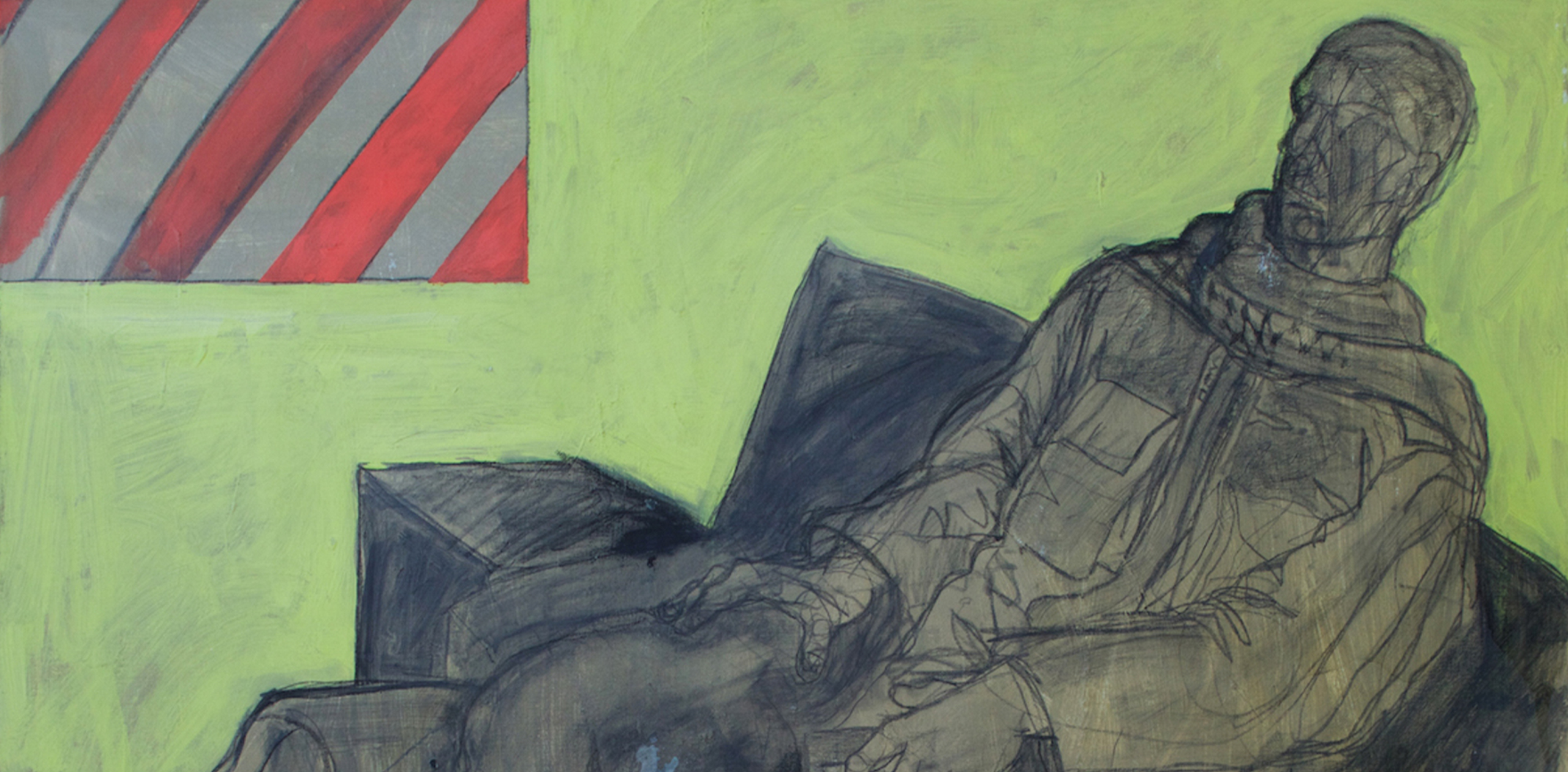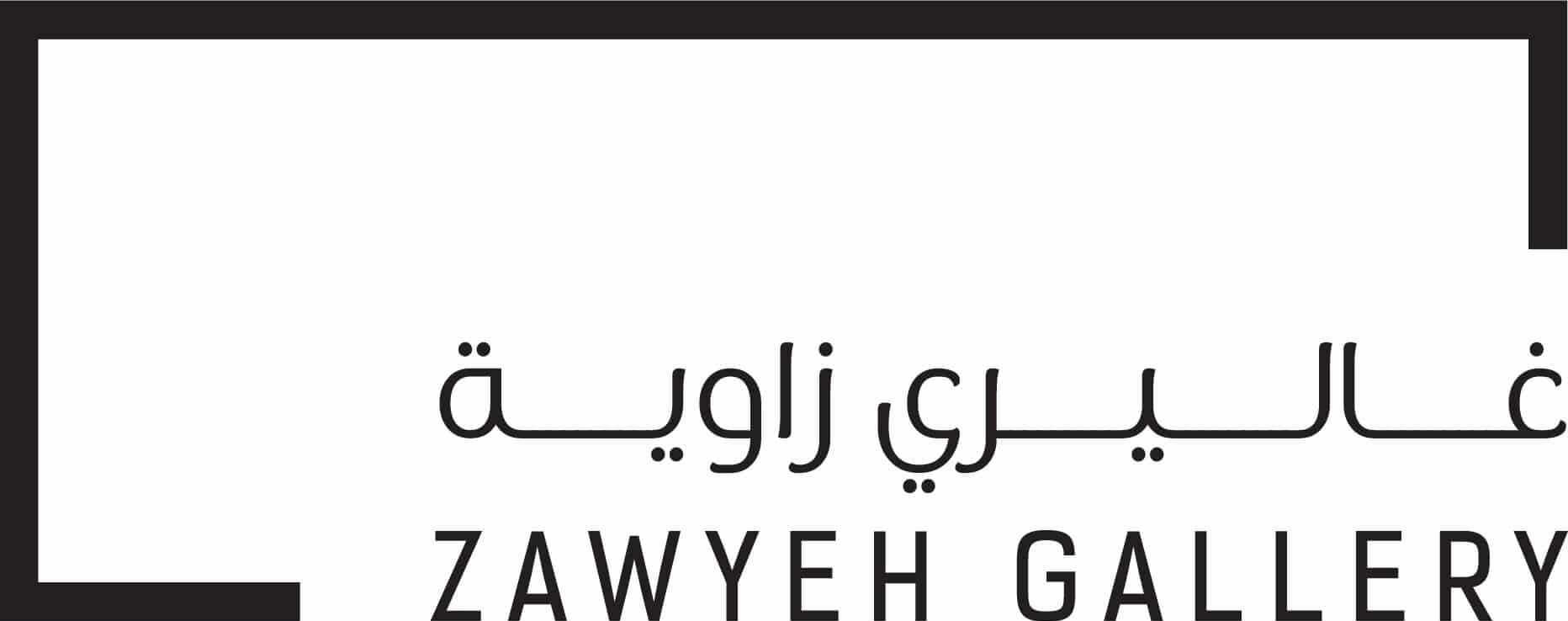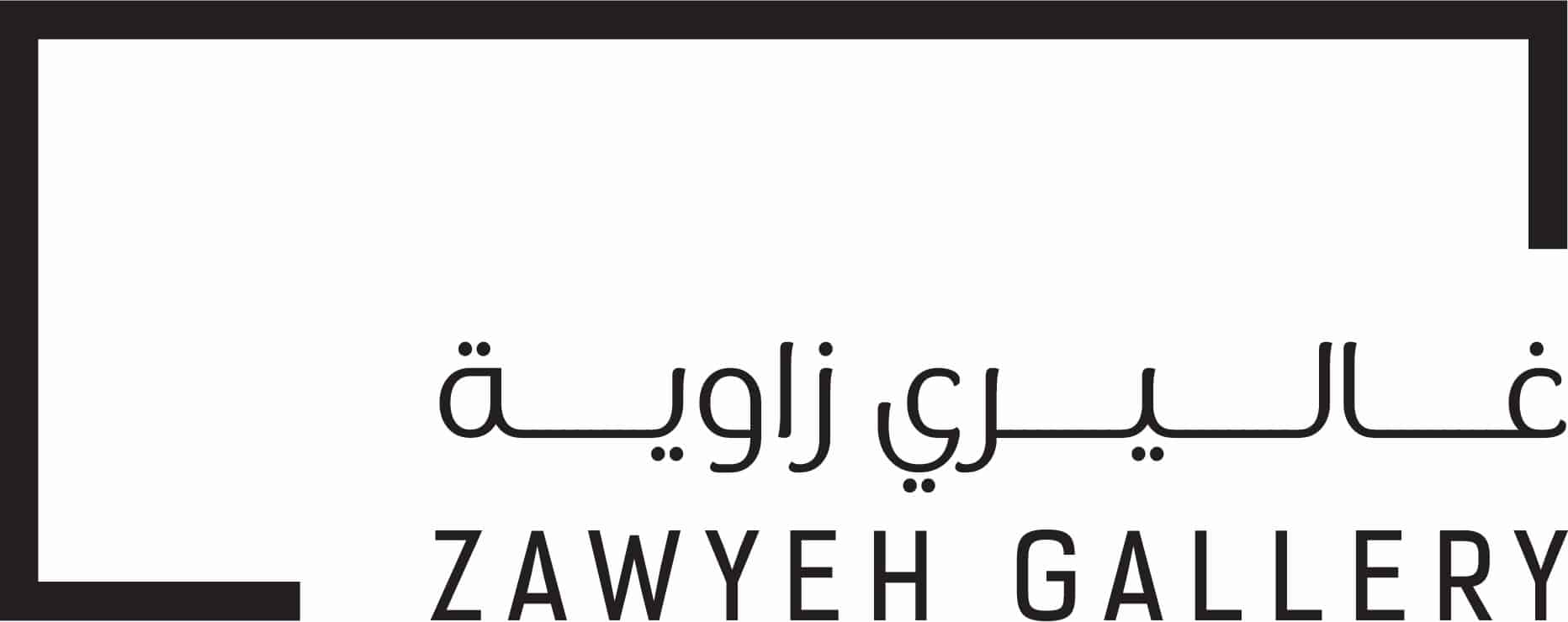
9 December – 11 January, 2018
Out of Place
Hosni Radwan
Location: Ramallah
9 December - 11 January, 2018
Out of Place Hosni Radwan
Location: Ramallah
In his latest exhibition,”Out of Place,”Palestinian artist Hosni Radwan makes a provocative association between tragedy and the plane. Tragic events occupy the visual field, rendering dimension impossible and halting representation at a single level. In the absence of familiar depth, the eye must seek out a different way to look.
Delicate drawings of faces, figures, boats, planes, clouds, and rocks repeat across Radwan’s canvases here without conclusion, rendered fragile and often interrupted and overlaid by startling blocks of color. These blocks bisect and structure the canvases, directing the eye precisely along their lines in often-unfamiliar directions. Many of the paintings, for instance, read vertically rather than horizontally, a disturbance of narrative progression that recalls the profound disruption of Palestine’s historical narrative in the twentieth century. The figures in these paintings, too, refuse easy viewing: their faces are often turned down or away, and elsewhere eyes are shadowed, closed, or obscured by washes of paint. The paintings recall and refuse the simulation of communication – the meeting of eyes, painted and real – at the center of the traditional portrait. The boats, rocks, and skies that re-occur across the paintings are each abstracted and dislocated, never permitted to form the landscapes from which they are drawn.
As such, these paintings, which might seem gentle or even playful, constitute a profound engagement on multiple levels with the contemporary tragedy of Palestine. Images in which figures are interrupted or bisected by panels of color take on new meaning in the light of the horrors wrought on human bodies by occupation and war in, for instance, Gaza. That the painted faces refuse to meet the viewer’s eye seems a response to the stream of media images of Palestinian suffering, which have stripped from those photographed even the privacy of grief. The motifs and colors that reappear across the paintings, in new permutations and yet always recognizable, recall the sheer endlessness of Palestinian tragedy, which has already stretched across decades and shows no sign of a finale.
Repetition here does not produce coherence or form, only resemblance. For all their play with the surface, the paintings are at their most profound in the questions they pose about the need for new modes of representation in the face of tragic repetition and the limits of art in the face of human suffering.
Join our Newsletter
Sign up for our Newsletter and get all the latest news

